Cannabis in Ukraine: A Symbiotic Relationship for Thousands of Years

- ANCIENT TRIBES USED CANNABIS FOR CLOTHING — AND FUN
- CANNABIS WEAVING TECHNIQUES IMPRESSED EVEN FOREIGNERS
- WHITE CANNABIS CLOTH HELPED INSPIRE ARTISTS
- CANNABIS AS FOOD, AND TO PROTECT FOOD
- A STAPLE OF TRADITIONAL UKRAINIAN MEDICINE
- CANNABIS FIBERS FORTIFIED AND REINFORCED HOMES
- RITUALS AND SIGNS INVOLVED CANNABIS
- 20TH CENTURY SEES CANNABIS BANNED IN UKRAINE
- CANNABIS ENDURES ROLLER COASTER RIDE DURING PERIOD OF INDEPENDENCE, FROM 1991 TO 2021
- 2022 — RUSSIA’S INVASION COULD SPEED UP CANNABIS LEGALIZATION IN UKRAINE
- NOW IS THE TIME TO LEGALIZE IT
- CONCLUSION — UKRAINE’S HISTORY AND FUTURE IS NOT COMPLETE WITHOUT CANNABIS
The AskGrowers team set out to collect the most complete information about the use of cannabis in modern Ukraine, and we’ve compiled it together for our readers in one place. This article demonstrates the true and incredible value of this plant for dozens of generations of Ukrainians.
It’s difficult to single out an exact time when Ukrainians started using the plant. Also, the large size of the historical territory of Ukraine makes it challenging to identify where exactly certain trends and habits took root. Nonetheless, we’ve determined that Ukrainians used cannabis in several different ways across the territory’s regions.
ANCIENT TRIBES USED CANNABIS FOR CLOTHING — AND FUN
Cannabis in Ukraine called “коноплі” [konopli]. The main species was Cannabis ruderalis (hereinafter “cannabis”) and the plant’s modern name became popular only at the start of the 21st century. Cannabis was one of the few plants that Ukrainians used completely, for everything from manufacturing clothes, producing household items and creating paint products to including in food, in medical treatment, for heating, for paving roads, and for use in important spiritual rituals.
Archaeologists say that during the Eneolithic period, people who lived in the territory of modern Ukraine, the so-called Tripilians (tribes of the 5th - 3rd millennium BC), used cannabis to make clothes.

These populations grew both cannabis and flax across almost all areas of modern Ukraine, but cannabis was more widespread. The soils of Ukrainian lands were incredibly fertile and offered perfect conditions for growing the plant.
Cannabis was the only fibrous plant specially grown by the Scythians (tribes of Iranian origin) to make their clothes in the 5th century BC. That’s according to Greek historian Herodotus, who dedicated one of his nine books on the “Histories” to Scythia.
Despite its prevalence in Ukrainian lands, Herodotus was admittedly surprised by the number of ancient Greeks who were unfamiliar with cannabis.
"Someone who has no experience will not be able to distinguish whether these clothes are made of linen or cannabis,” Herodotus wrote in Book IV of Melpomene, dated around 440 BC. “The one who has never seen cannabis fabric in his life will believe that the clothes are made of linen."
The Scythians threw cannabis seeds on hot stones in their baths to produce steam. Historians believe the Slavic tribes living on the Ukrainian territory borrowed the technology of growing, processing and using cannabis from the Scythians. Pipes used for smoking have also been found in Scythian mounds with cannabis remains in them.
"The Scythians enjoy it so much they howl with pleasure," Herodotus wrote.
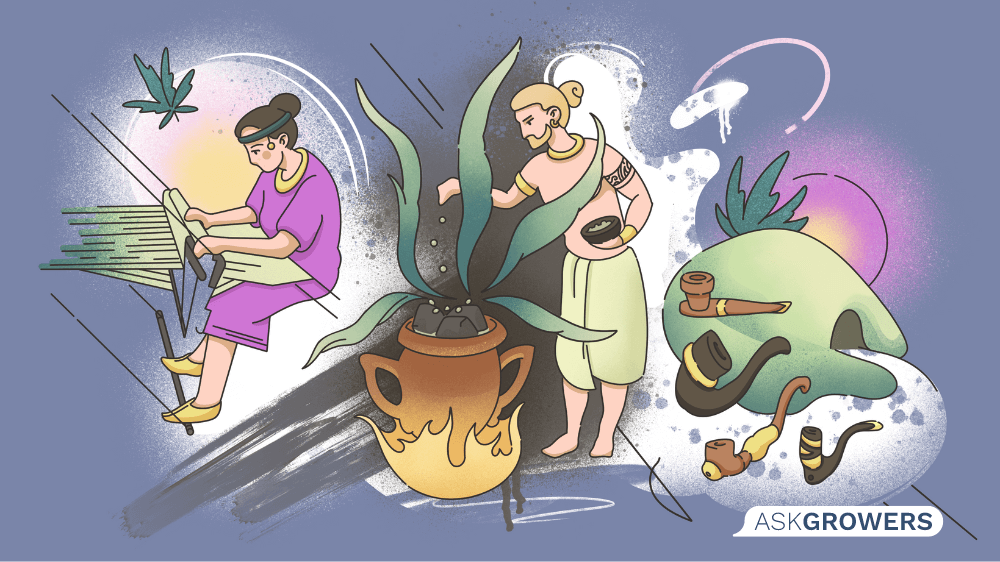
CANNABIS WEAVING TECHNIQUES IMPRESSED EVEN FOREIGNERS
Weaving is the practice of intertwining cannabis threads to make canvas, fabrics and durable ropes for production and economic use.
Ukrainians used cannabis fibers to make yarn for weaving fabrics, from which they sewed shirts, skirts for women and trousers for men. In some areas, Ukrainians used cannabis to make warm outer clothes for winter, such as modern down jackets made with cannabis fiber instead of down between the jackets’ linings and upper fabric.
They also used the plant to make towels, rows and bags for all kinds of household, personal, spiritual and industrial purposes, encompassing everything from dish and face towels to tablecloths, blankets, containers for carrying hay, potato sacks and grain storage vessels.
Farmers and agricultural workers used the strong cannabis ropes for tying up livestock and fastening sacks, among countless other uses. Because the cannabis fiber was so heavy-duty, it was ideal for producing such items.

During the 19th century and the first half of the 20th century, peasant life in Ukrainian villages, where the majority of people lived at the time, was not much better than the lifestyles of previous centuries.
People sowed cannabis seeds because a large quantity of their clothing would be made from the plant. Even the widespread distribution of factory goods did not result in peasant families completely abandoning their homemade woven products. The bulky looms used for weaving cannabis were kept in the attics of many peasants until the 1960s.
Many shirts in Ukraine were made from cannabis, and the quality of the fabric impressed even foreign visitors. Honoré de Balzac, a French novelist and playwright, was among countless foreigners during the 19th and 20th centuries to publicly praise the quality of Ukrainian-made cannabis canvas. It was noted for its elasticity and softness, which made it possible to manufacture different types of yarn. de Balzac considered it to be on par with even the best French canvas samples.
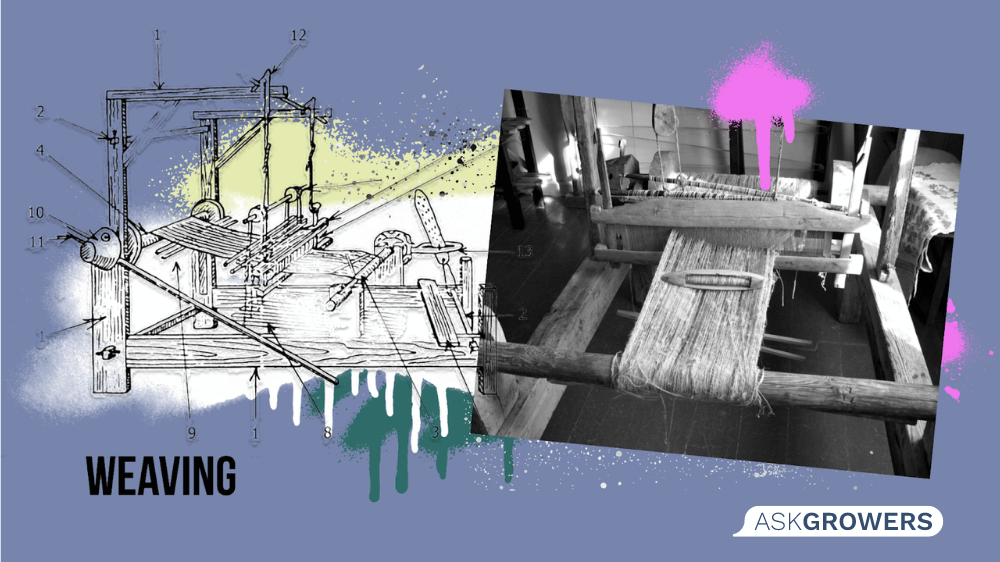
WHITE CANNABIS CLOTH HELPED INSPIRE ARTISTS
Cannabis cloth was white in color, which made it incredibly valuable for making clothing. Ukrainian legend has it that local peasants and farmers boiled and ate eggs in the field while sowing cannabis seeds, then scattered the seeds, saying: "God, please give us cannabis as white as eggs!" The color of the canvas was enhanced through a process of soaking it in a lake or river, followed by periodic drying in the sun. This process fascinated many Ukrainian artists and inspired famous works such as Zinaida Serebryakova's "Bleaching of the canvas" in 1917. Serebryakova enjoyed observing this phenomenon every year in the Kharkiv village of Neskuchny.

CANNABIS AS FOOD, AND TO PROTECT FOOD
In addition to using cannabis for fabric and clothing, Ukrainians consumed cannabis seeds as food. Local people extracted oil from the seeds, which was very aromatic and paired well with just about any dish. The seeds could also be pounded whole and added to potatoes or porridges. Cannabis seeds served as a fresh filling for varenyki, a cooked dish made of dough in which various fillings are wrapped, along with countless other festive dishes. Locals also enjoyed eating cannabis seeds raw to reap the benefits of the variety of nutrients, including protein, magnesium, iron and zinc.
The lignified parts of cannabis stems were also used to insulate potatoes, which could be stored in a dug-out pit. People poured the lignified parts of stems into a small hole, then inserted the potatoes. The cannabis stems were then placed on top to protect the crop from winter frosts.
A STAPLE OF TRADITIONAL UKRAINIAN MEDICINE
Traditional Ukrainian medicine consisted mostly of a mix of herbs and ritual-inspired spiritual beliefs. Locals used cannabis oil to lubricate the udders of cows so that the cows would calve and produce plenty of milk. People also lubricated burn sites with cannabis oil and used the plant to anoint the body of any person struck by lightning. For toothaches, people circulated the steam from roasted cannabis seeds inside their mouths.
In folk medicine, Ukrainians combined milk with cannabis seeds as a treatment against venereal diseases, to prevent pregnancy and to remove warts. They treated pustules and lichen planus with an ointment made by mixing cannabis pollen with fat.
.png)
CANNABIS FIBERS FORTIFIED AND REINFORCED HOMES
After the cannabis fiber was cleaned, Ukrainian populations separated the lignified parts of stems from the stalks of the plant, which resulted in a fine sawdust-like powder. People used the material to insulate the ceilings of houses and sheds. They also piled the cannabis residue in their attics to keep their houses warm. The plant material created an unfavorable environment for mice because it was small and prickly.
Traditional Ukrainians also tangled remnants of cannabis fiber that were not suitable for spinning and making ropes to insulate wooden houses. They’d fill the gaps between the wooden logs with the cannabis fiber.
RITUALS AND SIGNS INVOLVED CANNABIS
From the 14th to 18th centuries, major cannabis processing technologies were developed and the scope of the plant’s use exploded. Populations living in the territory of Ukraine also formed important spiritual rituals during that time, many of which incorporated elements of cannabis products or parts of the plant.
On December 13, on the religious holiday known as the Feast of St. Andrew, girls and young women would be told fortunes about their future husbands. At midnight, the girls would venture out into the yard, walk around their homes three times and scatter cannabis seeds into the snow, saying:
Andrew, Andrew,
I am sowing cannabis.
I drag my skirt,
I want to get married.
God, let me know
With whom to have the wedding.
Then, the girls would actually sweep the cannabis with their skirts. They’d scoop up the seeds from the snow, carry the seeds home and count how many they’d scooped up. Girls who had scooped up an even number of seeds were thought to soon be getting married.

Several other interesting stories emerged from this tradition. Girls were rumored to gather naked in their yards, then scatter the cannabis seeds and utter special words, which their future grooms would supposedly later hear in their dreams. Legend has it that boys in the village knew of this holiday tradition, so they'd grab the girls' clothes, hide them and agree only to give them back after getting a kiss on the cheek.
Ukrainians believed that children were not just found in cabbage patches, but could also be grown from cannabis seeds. The popular folk belief promoted the idea that eating cannabis seeds and other products made from the plant made women more fertile. During the Feast of the Introduction of Women, a religious holiday, women who hadn’t been pregnant for a long time would sit naked at the entrance to the house and spin cannabis.
Plenty of songs and jokes were also associated with cannabis’ role in fertility, which had not-so-subtle erotic undertones. People believed cannabis milk, a vegetable milk made from cannabis seeds, helped men produce sperm. In some regions, cannabis was used as a remedy for male impotence. People would boil the plant’s seeds with nausea-inducing elder bark and then drink the concoction in an attempt to purge away their impotence. Legend has it that three dead snakes would jump out with the vomit, and the once-impotent men would be cured.
Newborns became familiar with cannabis shortly after leaving the womb, because a woman who was about to give birth would tie a soft female-strain cannabis thread around her navel. Ukrainians believed that if women tied their navels with the male variety of the plant, which does not produce seeds, they would in turn become infertile themselves.
When baptizing a newborn, Ukrainian parents would include a female cannabis sprout. And during the rite of hair-cutting for girls (one year after their birth), the girls were placed on a cannabis-based mat before the haircut, so that they’d one day become mothers.
Among the Eastern Slavs, a young woman who wished not to have children quietly took a piece of the male variety of cannabis with her to her wedding.

Cannabis was a powerful talisman that served as a magical remedy against snakes for Ukrainians in the mountainous regions. On the Annunciation holiday, these people would lay pieces of cannabis cloth in the corners of their houses, set the cloth on fire and allow the smoke to waft around. They believed the cannabis smoke helped keep reptiles from crawling into the house.
Cannabis fields were considered dangerous places, especially at noon. Legend has it that at that time of the day, mermaids would appear within the plants. In reality, the legend came from cannabis stalks resembling mermaid hair.

There’s evidence that cannabis crops served as a "hiding place" for tobacco crops, which ruling authorities banned ordinary people from sowing during the interwar period.
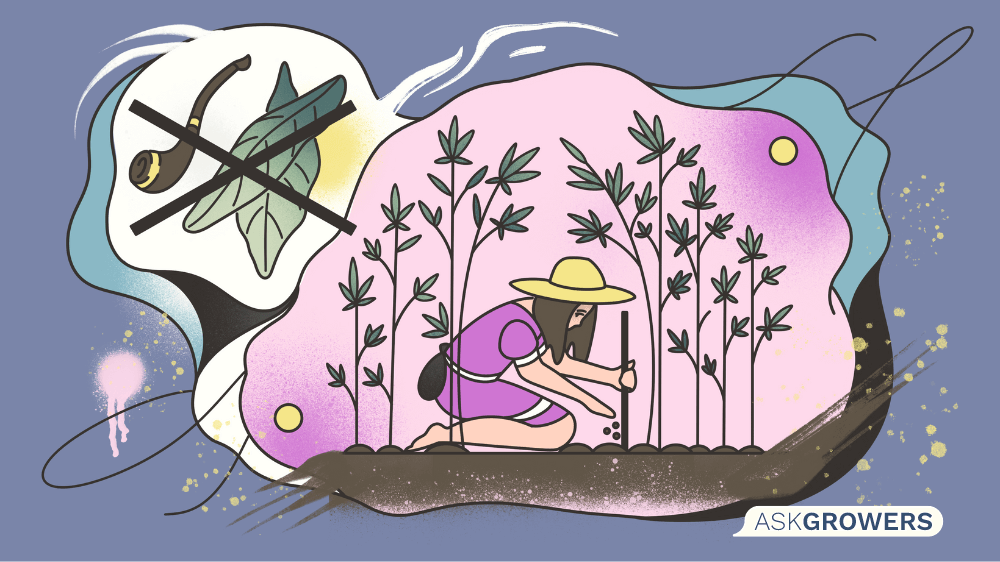
20TH CENTURY SEES CANNABIS BANNED IN UKRAINE
In 1965, authorities banned private individuals and most state agricultural associations from growing cannabis. Until this ban, cannabis was traditionally a must-have crop because of its myriad uses.
A Ukrainian woman told about the Holodomor famine of 1932-1933, which Soviet authorities organized to suppress the Ukrainian national liberation movement and physically destroy part of the Ukrainian peasantry, illustrates how her mother made a concoction from cannabis that saved their family from starvation. The account tells of how Soviet authorities took the cannabis concoction away from the family. Below, we’ve translated the woman’s story from a dialect of the Ukrainian language, most commonly spoken in the north of the country.
Olevshchyna (Zhytomyr region)
A Memory of Hunger
“...My father then (crying)... died of hunger. And there were five of us. There were five of us and my father died of hunger.
Our mother cut off the linden leaves and dried them, and pounded them in a mortar with seeds on a sieve. So she made a paste from this leaf. The paste was jelly-like, and we were told to eat it, so we ate it. It was so sweet and delicious. We ate almost everything: goosefeet, whatever we found, and calluna ...
- And what, nobody rebelled? Why didn't you rebel?
We wanted to rebel, but we couldn't do anything. And (the Soviets) were killing a lot of starving people. Many were beaten. There was a gang that even killed their own subordinates.
The gang started to beat one of their members in vain, for nothing. Some of the people beaten were collaborators who organized our collective farm. Yes, they came to us.
In one bag was a little cannabis, in another was seeds, in a third was millet for seed. And (the Soviet authorities) came and overturned this barrel. Two barrels, actually, there were two such barrels, lying on the ground.
We were just children at the time, and powerless. Mom tried to stop them, they pushed her, she fell down and said to them: "Boys, what are you doing? Leave it to my children, I'm cooking pasta for them. We, too, are dying of hunger, because my husband is gone."
The leader of their group responded "You are a rich woman in the village." Oh, what a rich woman she was. We had a couple of horses, and the men took our horses to the collective farm. They took the cart (crying) and our plows. Pretty much everything that we had was taken away.”
Recorded on November 7,1997 in the village of Perza
Olevsky District, Zhytomyr Region
By Pavlyna Naumivna Kovalchuk, born in 1925
The Holodomor is a dramatic page in the book of Ukrainian history. Even then, cannabis played an important role.
While Ukrainians have long appreciated the special properties of cannabis, they also acknowledged its difference from other plants. When the stems were soaked in the reservoirs, the jasmine and the fish died. The children, when playing among tall cannabis plants, would fall asleep. The women who plucked the stalks would feel dizzy. Nevertheless, the older rural population of Ukrainians even today claim not to be bothered about the cannabis plant’s narcotic properties. We hypothesize that mainly non-psychotropic strains of cannabis were traditionally distributed in the territory of Ukraine.
CANNABIS ENDURES ROLLER COASTER RIDE DURING PERIOD OF INDEPENDENCE, FROM 1991 TO 2021
After Ukraine gained its independence in 1991, cannabis remained banned by authorities and the once-flourishing industry continued to decline.

In 2011, cannabis crops received their lowest-ever quota: 357 hectares. For comparison’s sake, the average agricultural enterprise had more than 1,000 hectares of cultivated land.
In 1913, the cultivated area of cannabis in Ukraine was 127,000 hectares. In 1975, the cultivated cannabis area was 72,000 hectares
In the 1970s, Ukrainian farmers produced 21,000 tons of cannabis fiber. In 1990, that number fell to 7,700 tons of cannabis fiber and 1,200 tons of grain. By 2008, just 3,000 tons of cannabis fiber and 120 tons of grain were harvested from 900 hectares.
In 2008, regulations allowed only three enterprises to carry out cannabis processing. By 2010, that only one enterprise had the green light to process cannabis.
Despite waning legal access to the plant, employees of the Glukhiv Institute of Bas (Fibrous) Cultures of the Ukrainian Academy of Agrarian Sciences in 2009 became the first in the world to create a variety of cannabis that did not contain any narcotic substances.

Photo by Ukraїner
Glukhiv scientists also contributed a number of different strains and varieties with a negligible content of tetrahydrocannabinol (THC).
The development of narcotic-free varieties of cannabis reopened the door for economic activities related to the cultivation of the plant. In August 2012, Ukraine’s Cabinet of Ministers did away with some restrictions that limited cannabis processing and storage. Yet distribution, sale and possession of marijuana in Ukraine remains illegal today. Cannabis, cannabis oil, extracts and cannabis tinctures are included on the state list of "especially dangerous narcotics.”
Possession of up to 5 grams invokes administrative responsibility, while possession of more than 5 grams is a criminal offense. Illegal sowing or cultivation of up to 10 cannabis plants calls for a fine equal to anywhere from the equivalent of $604 to $3,342 U.S. dollars in Ukrainian hryvnia.
Despite the plant’s current status as an illegal drug, Ukrainian citizens as a whole are very pro-legalization, especially for medical cannabis.
Freedom March, Ukraine’s civil movement for cannabis law reform, in 2017 made a joint appeal with renowned scientists to the country’s Cabinet of Ministers. Their pitch? Legalization is not only beneficial to Ukraine’s society, but necessary. After that, president Volodymyr Zelenskyy proposed five questions for citizens to answer about their opinions towards cannabis. The most notable question gauged the population’s thoughts on legalizing medical cannabis. Over 65 percent of adults said they agreed with this idea. At the same time, a separate unofficial poll showed support for legalization at 70 percent, confirming that Ukrainians were mostly in favor of medical cannabis.
Yet, to this day, the statel authorities have taken minimal action. In April 2021, a trio of medicines containing THC and CBD (Dronabinol, Nabiximols and Nabilone) received state approval for medical use. But it fell short of the wide-scale medical legalization that most Ukrainians have clamored for.
Dronabinol and Nabilone are synthetic cannabinoids, with THC that’s synthesized in a laboratory. Nabiximols is a natural cannabinoid that includes cannabis extract. Dronabinol helps treat anorexia in people with AIDS, Nabilone is used to treat the side effects of chemotherapy in cancer patients and Nabiximols helps with multiple sclerosis.
Viktor Dosenko, a renowned Ukrainian pathophysiologist, geneticist and cannabis advocate, called the lack of progress toward full-scale medical cannabis legalization at the time “obscene.”
"After such a clear expression of the people's position, no politician has explained why we haven’t done more to legalize medical cannabis,” Dosenko argued. “The authorities have proof that the nation is ready and supports the legalization of medical cannabis to help sick people.”
Viktor Lyashko, Ukraine’s Minister of Healthcare, has said the list of diseases in which cannabis can treat also includes epilepsy, Alzheimer's disease, Parkinson's disease, psoriasis, depression and post-traumatic stress disorder (PTSD).
2022 — RUSSIA’S INVASION COULD SPEED UP CANNABIS LEGALIZATION IN UKRAINE
Ukraine would, during normal times, probably still face a long road to legalizing medical cannabis. But Russia’s full-scale invasion of the country could speed things up.
Lyashko estimates that some 15 million Ukrainians will need psychological support as a result of the war, 3 to 4 million of whom will need medical treatment. According to a 2019 study by scientists at Canada's University of British Columbia, cannabis use can significantly reduce the risk of depression and suicidal thoughts in people with PTSD. In short, Ukrainians now have a tangible need to speed up the process of making cannabis more widely available.
Draft law No. 7457 proposes a legalized, regulated cannabis industry for medical, industrial, scientific and technical use. The Verkhovna Rada, Ukraine’s state legislature, introduced the bill on June 10, 2022. If passed into law, it’d allow Ukrainians to buy, store and use medical cannabis-based medicines prescribed by licensed doctors.
The first version of the law is admittedly imperfect; it includes strong state restrictions on the certification and approval of each medication, which could make access to the plant unnecessarily difficult for patients. It also creates a dependency on foreign manufacturers of specific drugs. For example, American and Canadian pharmaceutical companies will have to certify their drugs in Ukraine, which the companies could easily decide not to do unless they see clear avenues for profit. Lawmakers have said a second draft of the bill, coming in 2023, will revise and soften these points.
NOW IS THE TIME TO LEGALIZE IT
We at AskGrowers believe now is the best time to legalize medical cannabis because of Ukraine’s need to treat PTSD among our military and civilian populations. Evidence-based pharmaceutical drugs that treat this disorder are few and far between across the world, but cannabis is one of the least-expensive, most-natural and most-enjoyable forms of doing so.
Evidence of cannabis helping with physical pain caused by injuries and wounds also exists. Since 2014, when Russia began its latest assault on Ukrainian sovereignty, the need for assisting military veterans has skyrocketed. Hilarion Yaroshenko, a pharmacy professor at the Ukrainian Military Medical Academy, said over 3,000 Ukrainian veterans committed suicide from 2014 to 2022. He expects that number to be significantly higher when the latest tallies for 2022 and 2023 are released.
Ignorance and even prejudice toward the plant has shaped state policy for far too long. Lyashko and the Ministry of Health must convey to doctors the true and most relevant information about the latest research proving the plant’s therapeutic effects. Ukraine does not have a sufficient number of qualified doctors willing or able to help patients with PTSD, and we’re certain that the country will need the help of experts from abroad to create and implement proper military rehabilitation systems.
Ukraine only has one military rehabilitation center that works according to correct protocols with the appropriately specialized doctors, such as a psychiatrist, a neuropathologist and a psychotherapist. Located in Kyiv, it has room for 220 patients. Several other centers are under construction, but their respective launch dates are not yet known. In the meantime, legalizing cannabis could help patients receive a form of urgent care until such facilities with the proper specialists are available.
Experts have noted that Ukraine cannot even conduct clinical research on cannabis due to the plant’s current state status as an illegal narcotic. Given the soaring number of people who need help, legalizing the plant would allow for vital research that could lead to proper guidelines on providing therapy to a wide range of people.
CONCLUSION — UKRAINE’S HISTORY AND FUTURE IS NOT COMPLETE WITHOUT CANNABIS
Countless traditions related to cannabis and real means of using this prized plant have shaped Ukraine’s cultural and economic history. Cannabis can also play a vital part in the country’s future as a healing medicine, agricultural staple, economic stimulator and research crop. Simply put, Ukraine’s history cannot be told without mentioning cannabis. The quality of the country’s future and the overall well-being of its citizens will also likely depend on the plant being legalized.
AskGrowers would like to sincerely thank the historians and ethnographers whose incredible research made our guide on the history of cannabis in Ukraine possible: Natalya Telegei, Mykhailo Krasykov, Alla Dmytrenko, Volodymyr Galaichuk, Volodymyr Shchybrya all made significant contributions to this detailed article. The use of any parts of this material is possible only with reference to this article as the original source.
If you have any questions, suggestions or feedback, feel free to email us at [email protected]; we’d love to hear from you!
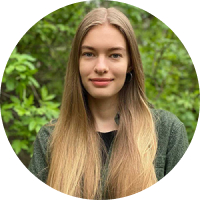
 Industry
Industry

.jpg)

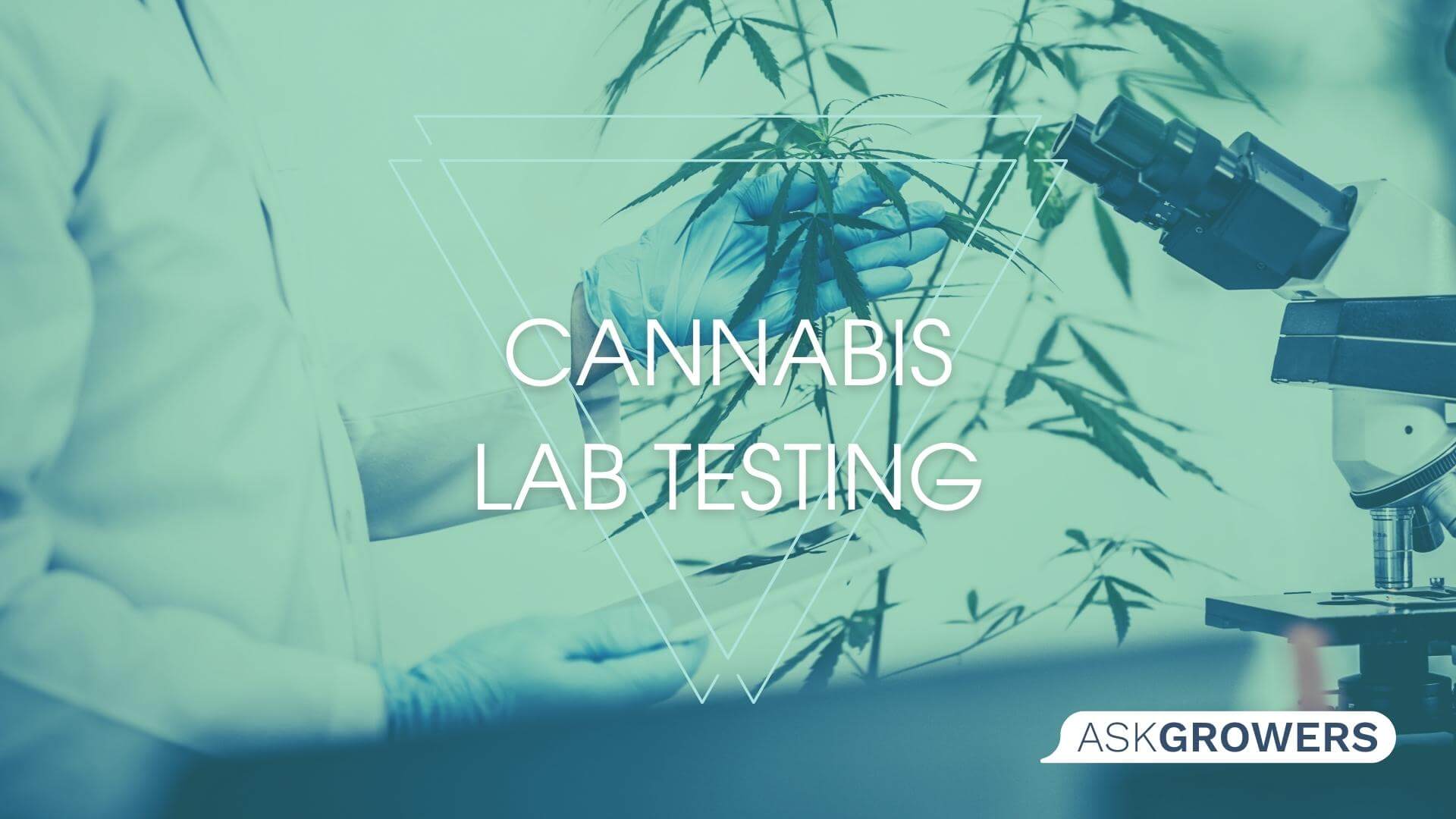

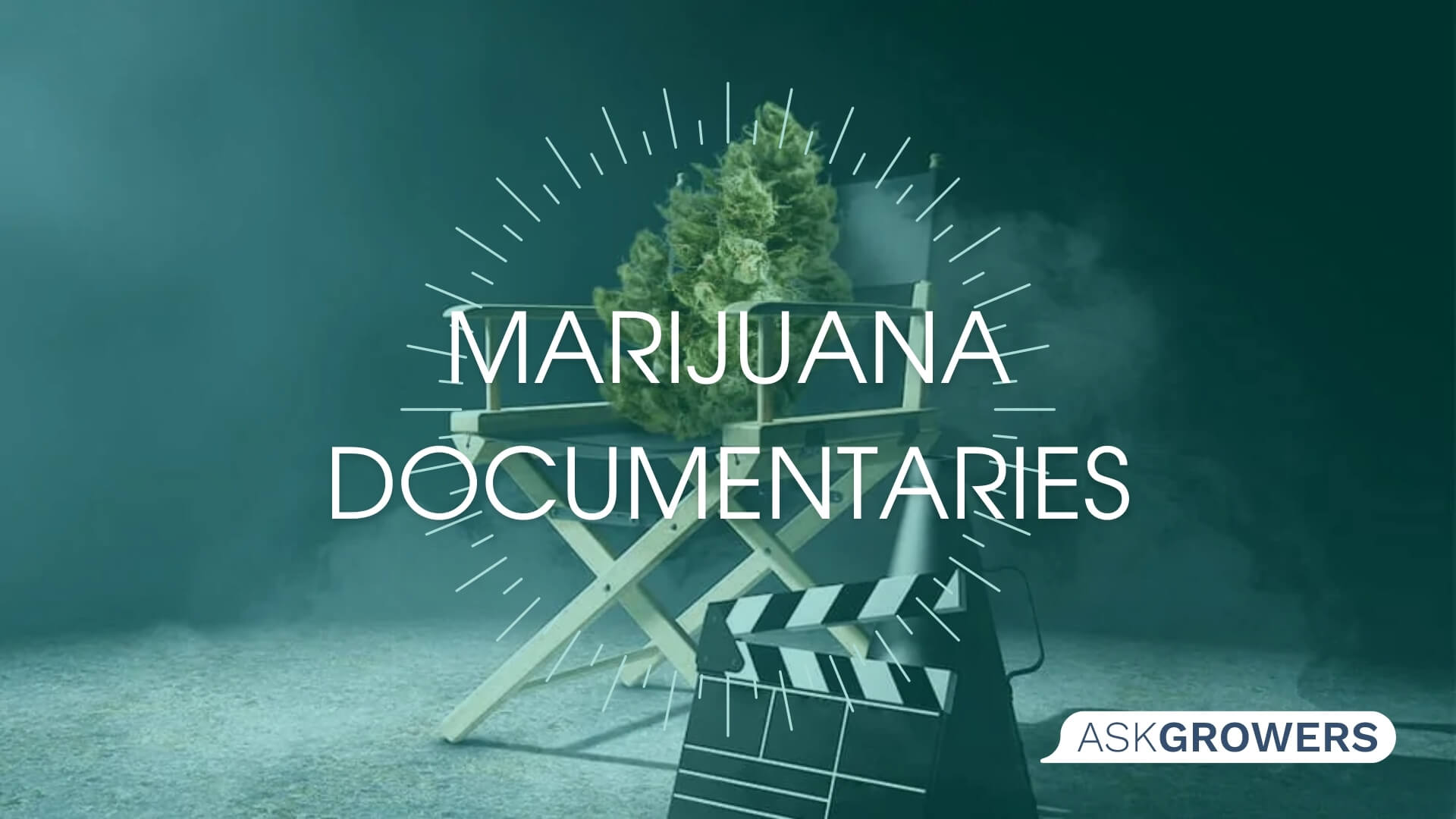
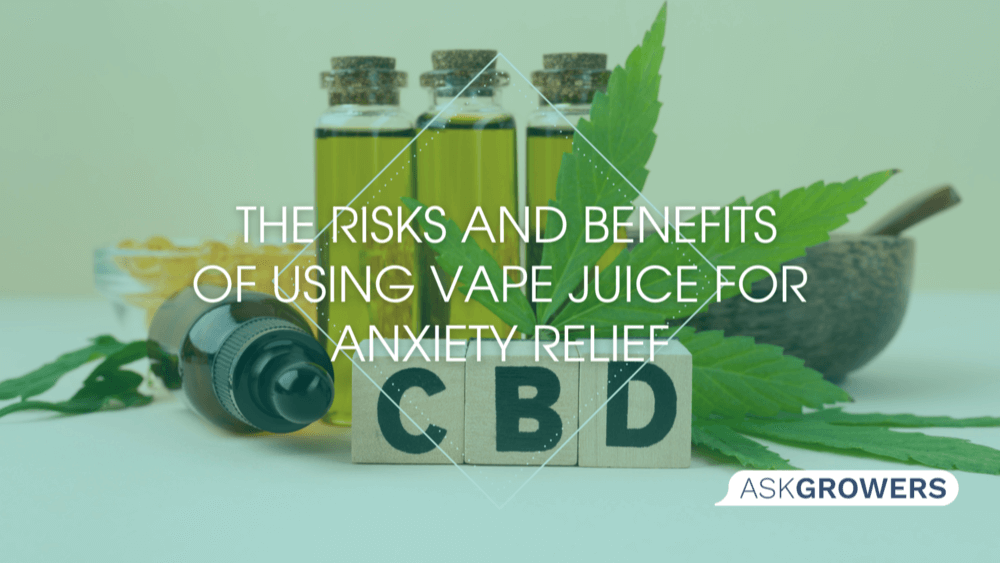

 (1).png)
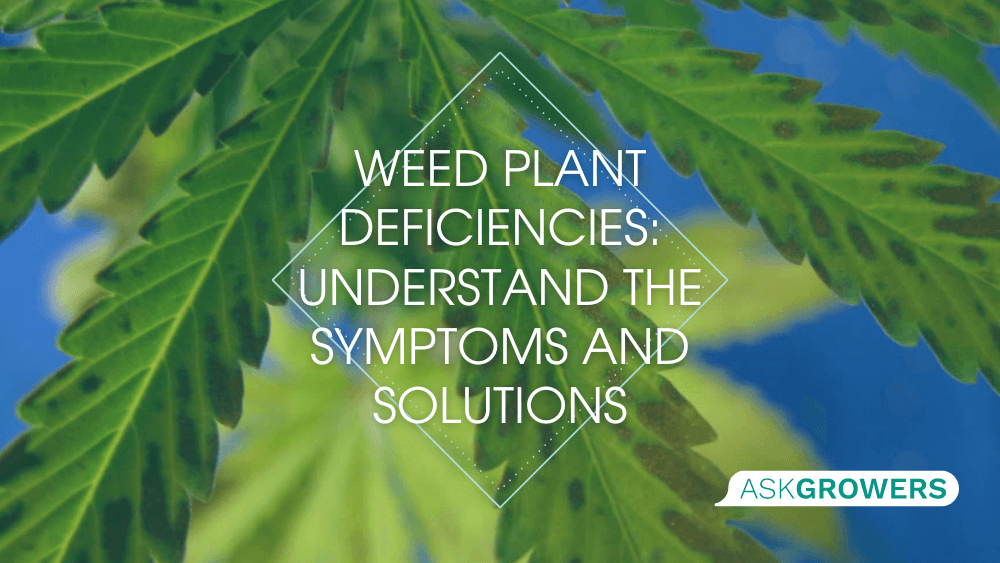

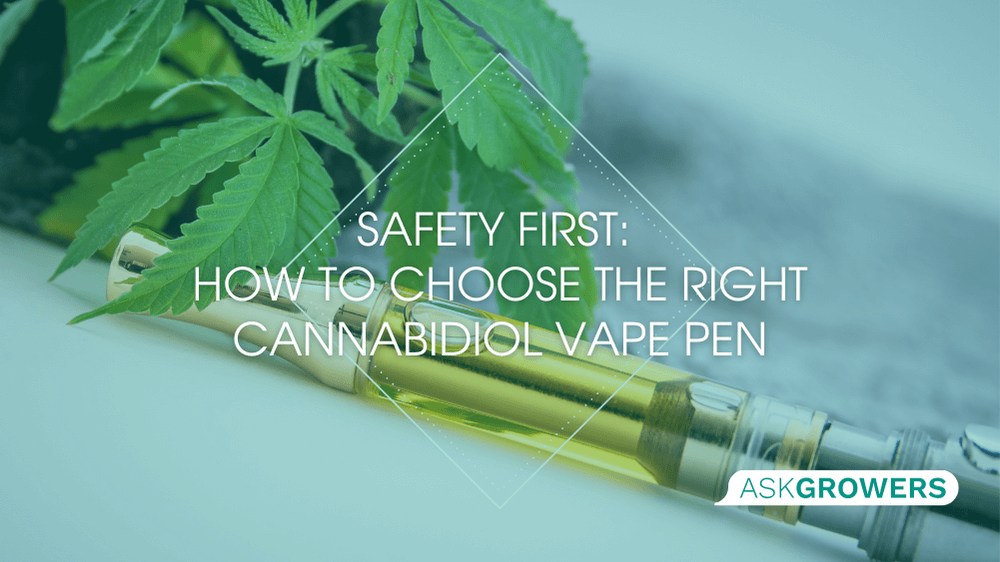
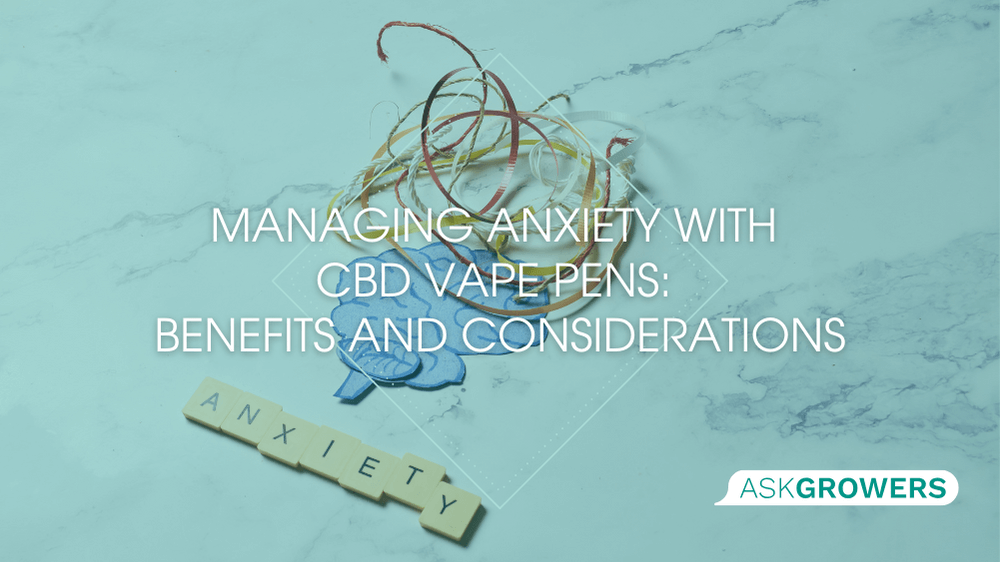
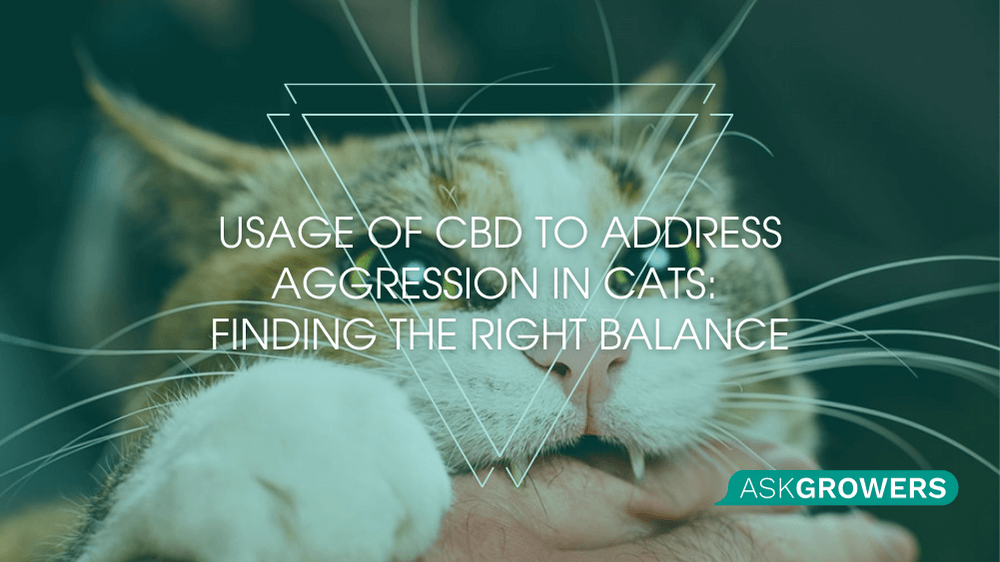

Be the first and share your opinion
Write a Review